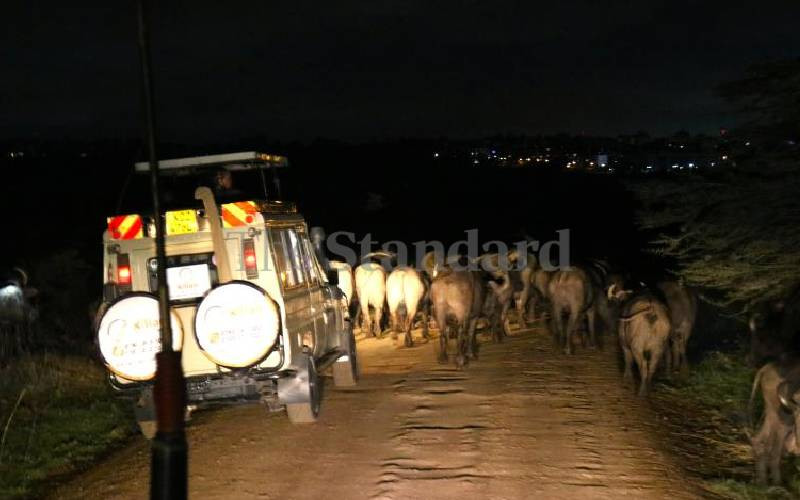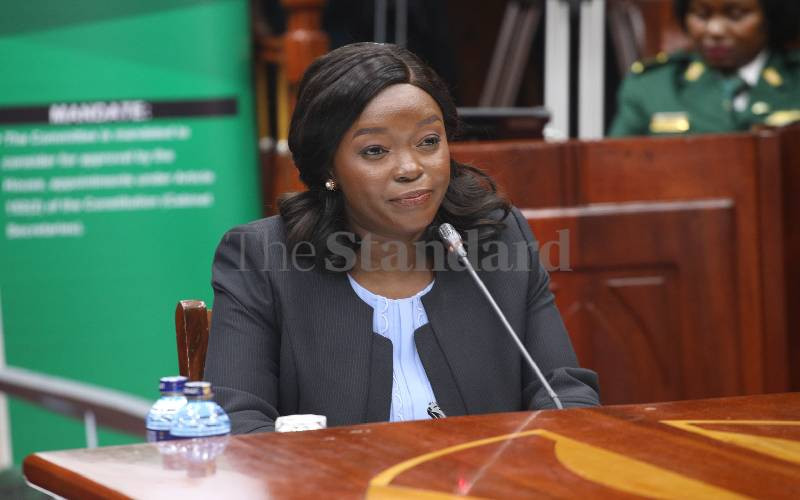
There is no better way to turn strangers into friends than to put them in one room for an extended period of time. It helps if the room moves and has clear windows which ensure for a change of scenery.
That was this writer’s conclusion after an intense bonding session in a shared overland truck during a safari to Elsa’s resting place.
For those not acquainted with Elsa, a quick history lesson will do. In 1924, an 18-year old British vagabond with sandy blond hair and striking blue eyes named George Adamson came to Kenya.
He would be entranced by nature’s splendour and never left. He dedicated his life to conservation. His new found passion rewarded him with a job as a game warden and a wife.
Twice-divorced Austrian Friederike Victoria Gessner who was later known as Joy was on safari when she met George. The Adamsons would spend much of their time living in tented camps, wandering by Land Rover across the Kenya’s landscape teeming with wildlife.
In January 1956, when George was a senior game warden of Kenya’s Northern Frontier Province, he was sent to track a man-eating lion. The lion’s mate charged at him and George killed her. He would later learn that the lioness had been protecting three cubs.
Remorseful, the couple opted to adopt the cubs and named them Elsa, Big One, and Lustica. From this act, George earned the nickname Baba ya Simba.
While her two siblings were moved to the Netherlands’ Rotterdam Zoo, Elsa, the youngest of the trio, remained. By 1958, however, a full-grown Elsa began becoming a threat to neighbouring farmers’ livestock and the young herders.
The Adamsons had trained the feline the ways of the wild, and she was successfully released into the wild.
Elsa’s story drew international acclaim which was crowned by Joy Adamson’s 1960 book Born Free, chronicling their experiences with Elsa.
The book was made in to movie and became an award winning classic. Elsa would not only change George and Joy’s lives, but through subsequent books and movies, she promoted interest in conservation.
INTERNATIONAL PROMINENCE
Elsa, as all good things, would perish in George’s lap from what was believed to be a tick disease.
She was buried in Meru near the Ura River, and to this day, visitors to the park pay their respect at her grave.
Stay informed. Subscribe to our newsletter
The Adamsons gave most of their money and life for the conservation of wild animals and even met their demise in the wild.
It is against this backdrop that Meru National Park shot to international prominence.
At its peak in the early 70s, the park and adjacent conservation areas hosted as many as 50,000 tourists a year. Meru was the jewel of Kenya’s tourism.
Established in 1968, it incorporates Bisanadi, Kora, Rahole and Mwingi National Reserves.
It is situated right on the equator at an altitude of between 304 to 1,036 metres above the sea level and covers 870 square kilometres. Of note is Bisanadi National Reserve — a true wilderness, only accessible by all-wheel drive vehicles — that covers a further 606 square kilometres.
Apart from three large rivers, Tana to the south, Ura to the south-west and the Rojeweru to the east, the park is crossed by many other permanent streams fringed with dense thickets of fig trees and raffia palms that meander like dark ribbons through the park, forming several large swamps.
With such wealth — green hills, eye catching kopjes where baboons cavort and leopard lurk among the boulders, riverine forests, luxuriant jungle, coursing rivers, verdant swamp, khaki grasslands, gaunt termite cathedrals, and an ever evolving dance between clouds and sky — wildlife thrived and on their trail, poachers followed.
WARM WATERS
Fortunately, as the poachers moved on, rejuvenation began.
In 2000, the International Fund for Animal Welfare, together with the French Agency for Development and the Kenya Wildlife Service, started a project to restore the 870 square kilometres of Meru National Park to its former status as a jewel in Kenya’s natural heritage crown.
What you will experience today is a measure of the commitment not just of the conservationists and investors, but of people from the local Meru and Boran communities who staff the camps and secure the park — and are proud of its renaissance and growing reputation.
So now, Reticulated giraffe, rare pinstriped Grevy’s zebra, giraffe-necked gazelle, lesser kudu with their spiral horns, straight-horned beisa oryx, harems of caramel-coated impala, cheetah, river turtles, Nile crocodiles and hippos live free.
The swampy grasslands are grazed by Defassa waterbuck and shifting herds of buffalo while on the Rojewero River, the largest watercourse in the park, brilliant kingfishers— malachite, pygmy, pied and others — flash from bank to bank through the sunlight, while fish eagles patrol overhead.
More than 400 species of birds have been recorded here. From the splendid, blue-legged Somali ostrich to the miniature red-cheeked cordonbleu, and including some rarities, such as the huge Pel’s fishing owl and the African finfoot.
Between October and April, the park is also a spectacular gathering area for Palearctic migrants such as swallows, martins, bee-eaters and rollers. It is in Meru Park that the documentary film Six Feet under the Savannah was shot.
Taking the scenic route through Nyeri — Nanyuki — Meru route, a beautiful country is revealed as nature and human hand is juxtaposed. If you want a breath-taking view of Mount Kenya with a backdrop of swaying wheat heads, this is the way to go. As dusk fell, having covered what would otherwise be a grueling 348 kilometres, we pitched tent at the Bwatherongi Public Camp site next to Kinna Cottages. The camp by the wooded Bwatherongi river, situated approximately 22 kilometres from the main Murera Gate is not too shabby.
Apart from the expected basics, an ablution block and fuelwood, it boasts a pool which is a welcome delight after enduring a game search in the expansive park.
I cannot help, but chuckle at the thought of how much we relished those warm waters late at night. Different strokes for different folks. Different accommodation options will suit different individuals.
For starters, there are KWS serviced self-catering bandas and special campsites. KWS even has student hostels for Sh250. Yes! You read that right.
Privately owned accommodation is also available.
Murera Springs Eco Lodge with its nature trail and mystic baboon parliament; Ikweta Safari camp with its extra touched décor and well-spaced cottages; Leopard Rock with its hand crafted furniture and resident leopard sightings; Rhino River Camp famous for its Italian cuisine and close proximity to the Rhino Sanctuary; Off Beat camp on the banks of the Bisanadi River with its superb mix of modernity and tradition and of course Elsa’s Kopje that holds bragging rights being positioned on the iconic Mughwango Hill, right above the spot where George Adamson had his camp.
It is possible to visit in your own self-drive vehicle.
You could also fly-in. Chartered light aircrafts may land at the main airstrip at Kina, Mulika next to the lodges. If you choose to go by road, either self-driving or with a driver-cum-guide at the wheel, the journey from Nairobi via the foothills of Mount Kenya and Meru town takes around six hours.
For backpackers and campers, there are many buses from Nairobi to Meru town, from where regular passenger service vehicles go to Maua, which is 35 kilometres to the park’s Murera Gate.
So much to see so little time as the gang tried to fit as much as they could in weekend long itinerary.
Tip: Meru National Park is quieter than some of Kenya’s other parks so visit now and you can have it practically to yourself.
[email protected]
 The Standard Group Plc is a
multi-media organization with investments in media platforms spanning newspaper
print operations, television, radio broadcasting, digital and online services. The
Standard Group is recognized as a leading multi-media house in Kenya with a key
influence in matters of national and international interest.
The Standard Group Plc is a
multi-media organization with investments in media platforms spanning newspaper
print operations, television, radio broadcasting, digital and online services. The
Standard Group is recognized as a leading multi-media house in Kenya with a key
influence in matters of national and international interest.
 The Standard Group Plc is a
multi-media organization with investments in media platforms spanning newspaper
print operations, television, radio broadcasting, digital and online services. The
Standard Group is recognized as a leading multi-media house in Kenya with a key
influence in matters of national and international interest.
The Standard Group Plc is a
multi-media organization with investments in media platforms spanning newspaper
print operations, television, radio broadcasting, digital and online services. The
Standard Group is recognized as a leading multi-media house in Kenya with a key
influence in matters of national and international interest.







